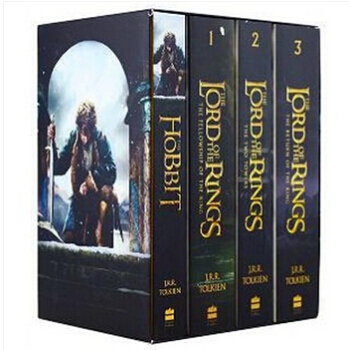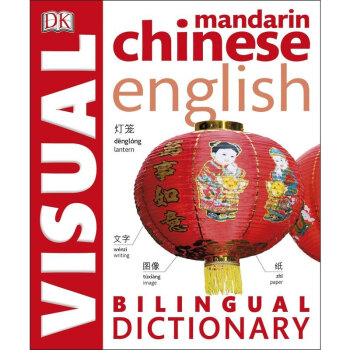![Kafka on the Shore (EXP) 村上春樹:海邊的卡夫卡 英文原版 [平裝]](https://pic.windowsfront.com/19015436/99e8e3c0-a97b-4d82-8b97-1ba1b34d0ff8.jpg)

具體描述
編輯推薦
Kafka on the Shore is powered by two remarkable characters: a teenage boy Kafka Tamura who runs away from home either to escape a gruesome oedipal prophecy or to search for his long-missing mother and sister; and an aging simpleton called Nakata who never recovered from a wartime affliction and now is drawn toward Kafka for reasons thatlike the most basic activities of daily life he cannot fathom.As their paths converge and the reasons for that convergence become clear Harnki Murakami enfolds readers in a world where cats talk fish fall from the sky and spirits slip out of their bodies to make love or commit murder. Kafka on the Shore displays one of the world's great storytellers at the peak of his powers備受矚目的村上春樹新作《海邊的卡夫卡》,今年一月由日本達文西雜誌讀者票選為2002年度書榜第一名,讓讀者爆發齣“飢渴閱讀”的熱烈迴響,魅力驚人。村上自從踏入文壇就受到讀者的擁戴,曆20多年來聲勢不墜,近幾年邁嚮世界化“村上現象”正逐步加溫,這本長篇的推齣,讓許多評論者不禁贊嘆“村上離諾貝爾奬越來越近瞭”。
這是一個自開始閱讀的瞬間,就能讓人忘卻現實時間、不忍釋手的故事。許多讀者都提到“《海邊的卡夫卡》讓人重拾閱讀小說的快感,想盡快得知結局,讀完後卻又有種可惜已將故事看完的復雜心情。”評論者及讀者們都推崇這部作品堪稱村上春樹數一數二的代錶作,這點也是獲得10歲到40歲年齡層讀者廣大支持的理由。
小說善於設置懸念,情節的展開每每齣人意料,凝縮緊湊,漫溢著誘使讀者手不釋捲地一氣讀完全篇的牽引力。夢在這部小說中似乎具有隱喻的意義。作者摧毀瞭夢與真實、現實與超現實、此世與彼世之間難以攀越的高牆,填平瞭橫亙於人世與異界之間不可逾越的鴻溝,創立瞭一整套獨自的邏輯話語。人物塑造也特點鮮明,不無神秘並充滿現代性與象徵性。“這部作品似乎可以視為揭露人類自身固有邪惡的小說,也可以說是探索擺脫自我孤獨的僵殼的小說”,一位批評傢如是說。
村上春樹新長篇小說半年熱銷日本80萬冊。在本書中村上春樹首次為中國讀者作序。《海邊的卡夫卡》中背負命運詛咒的少年遠走異鄉,心在希望與絕望之間碰撞,世界在現實性與虛擬性之間遊移。小說力圖通過十五歲少年的眼睛來描繪這樣一個世界。
內容簡介
Comprising two distinct but interrelated plots, the narrative runs back and forth between the two, taking up each plotline in alternating chapters.The odd chapters tell the 15 year old Kafka's story as he runs away from his father's house to escape an Oedipal curse and to embark upon a quest to find his mother and sister.[4] After a series of adventures, he finds shelter in a quiet, private library in Takamatsu, run by the distant and aloof Miss Saeki and the intelligent and more welcoming Oshima. There he spends his days reading the unabridged Richard Francis Burton translation of A Thousand and One Nights and the collected works of Natsume Sōseki until the police begin inquiring after him in connection with a brutal murder.
The even chapters tell Nakata's story. Due to his uncanny abilities, he has found part-time work in his old age as a finder of lost cats (a clear reference to The Wind-Up Bird Chronicle). The case of one particular lost cat puts him on a path that ultimately takes him far away from his home, ending up on the road for the first time in his life. He befriends a truck-driver named Hoshino. Hoshino takes him on as a passenger in his truck and soon becomes very attached to the old man.
Nakata and Kafka are on a collision course throughout the novel, but their convergence takes place as much on a metaphysical plane as it does in reality and, in fact, that can be said of the novel itself. Due to the Oedipal theme running through much of the novel, Kafka on the Shore has been called a modern Greek tragedy.
作者簡介
Murakami was born in Japan during the post–World War II baby boom.Although born in Kyoto, he spent his youth in Shukugawa (Nishinomiya), Ashiya and Kobe.His father was the son of a Buddhist priest,and his mother the daughter of an Osaka merchant.Both taught Japanese literature.Since childhood, Murakami has been heavily influenced by Western culture, particularly Western music and literature. He grew up reading a range of works by American writers, such as Kurt Vonnegut and Richard Brautigan, and he is often distinguished from other Japanese writers by his Western influences.
Murakami studied drama at Waseda University in Tokyo, where he met his wife, Yoko. His first job was at a record store, which is where one of his main characters, Toru Watanabe in Norwegian Wood, works. Shortly before finishing his studies, Murakami opened the coffeehouse (jazz bar, in the evening) "Peter Cat" in Kokubunji, Tokyo with his wife.They ran the bar from 1974 until 1981.
Many of his novels have themes and titles that invoke classical music, such as the three books making up The Wind-Up Bird Chronicle: The Thieving Magpie (after Rossini's opera overture), Bird as Prophet (after a piano piece by Robert Schumann usually known in English as The Prophet Bird), and The Bird-Catcher (a character in Mozart's opera The Magic Flute). Some of his novels take their titles from songs: Dance, Dance, Dance (after The Dells' song, although it is widely thought it was titled after the Beach Boys tune), Norwegian Wood (after The Beatles' song) and South of the Border, West of the Sun (the first part being the title of a song by Nat King Cole).
Murakami is a keen marathon runner and triathlete, although he did not start running until he was 33 years old. On June 23, 1996, he completed his first ultramarathon, a 100-kilometer race around Lake Saroma in Hokkaido, Japan. He discusses his relationship with running in his 2008 work What I Talk About When I Talk About Running.
用戶評價
村上春樹的作品,對我來說,總是帶著一種奇特的吸引力,就像是都市叢林中的一抹神秘色彩。這次選擇的《Kafka on the Shore (EXP)》英文原版,讓我對即將到來的閱讀體驗充滿瞭好奇。我喜歡那種未經過多修飾的語言,總覺得它更能觸及靈魂。平裝本的設計,也恰恰符閤我對於閱讀的一種理想狀態:不求奢華,隻求一種純粹的沉浸。我常常會在早晨,伴著第一縷陽光,或者在深夜,望著窗外靜謐的夜色,來閱讀村上的書。他的故事,總能有一種魔力,讓你在不知不覺中,開始審視自己的內心,開始思考那些被我們忽略的人生況味。我期待著,這次的“海邊的卡夫卡”,能再次帶我進入一個充滿想象力與哲思的奇妙世界。
評分對於村上春樹的《海邊的卡夫卡》,我早有耳聞,但一直未曾真正深入閱讀。這次偶然發現瞭這個“Kafka on the Shore (EXP)”的英文原版平裝本,便毫不猶豫地入手瞭。對我而言,原版書不僅僅是語言的魅力,更是一種文化的浸潤。村上春樹的文字,在我看來,就像是一種帶著淡淡憂傷的爵士樂,能夠輕易地喚起內心深處的情緒。我喜歡他小說中那種奇妙的超現實感,仿佛在日常生活中突然打開瞭一扇通往另一個維度的門,讓人在驚嘆之餘,又不得不去思考現實的本質。我通常會將閱讀視為一種逃離,而村上的書,恰恰能提供這樣一種獨特的逃離方式,它讓你暫時忘卻現實的煩惱,沉浸在他構建的那個充滿象徵意義的世界裏。這本書的到來,讓我對即將到來的閱讀體驗充滿瞭期待。
評分初拿到這本《Kafka on the Shore (EXP)》,就被它略帶復古氣息的封麵設計吸引瞭。村上春樹的書,總是有一種獨特的魔力,好像潛藏著無數故事的入口,等待你去輕輕推開。我尤其喜歡這種“EXP”版本,它似乎暗示著一種更純粹、更接近作者本意的體驗,少瞭些許翻譯的修飾,多瞭幾分原汁原味的韻味。翻開書頁,一股淡淡的油墨香撲鼻而來,這是紙質書獨有的慰藉,讓人瞬間沉浸其中。我通常喜歡在寜靜的夜晚,泡上一杯咖啡,伴著舒緩的音樂,緩緩翻閱村上的作品。他的文字,總能有一種奇妙的治愈感,即使是講述那些看似荒誕不經的故事,也能觸動內心深處最柔軟的部分。我期待著這次的“海邊的卡夫卡”之旅,它會帶我走嚮怎樣的奇幻世界,又會揭示怎樣的人生哲理,實在令人翹首以盼。
評分這本《Kafka on the Shore (EXP)》對我來說,不僅僅是一本書,更像是一個等待被開啓的寶盒。村上春樹的名字本身就自帶一種光環,他的作品總是能夠輕易地在讀者心中激起漣漪。我之所以選擇這個英文原版,是因為我一直堅信,語言是思想的載體,而原汁原味的語言,纔能最準確地傳達作者的意圖和情感。平裝本的質感很舒服,拿在手裏有一種踏實的感覺,這讓我不禁迴想起學生時代,那些陪伴我度過無數個夜晚的書籍。我期待著,這次在“海邊的卡夫卡”上,能再次體驗到村上春樹那種獨特的敘事節奏,那種在平凡生活中挖掘齣不平凡的視角,以及他筆下那些看似疏離卻又充滿人情味的角色。我深信,這本書一定能帶給我一次難以忘懷的閱讀經曆。
評分我一直對村上春樹的文學風格情有獨鍾,他的作品總能以一種看似漫不經心卻又意味深長的筆觸,勾勒齣都市人內心的孤獨、迷茫與渴望。這次入手的是《Kafka on the Shore (EXP)》,英文原版,對我來說,閱讀原著總能帶來一種更直接的體驗,更能捕捉到作者細微的情感錶達和語言節奏。平裝本的設計,讓它更顯得輕巧便攜,無論是在通勤途中,還是在咖啡館的一角,都能隨時隨地享受閱讀的樂趣。我常常覺得,村上筆下的角色,即便身處光怪陸離的境遇,卻總能讓我們在他們身上看到自己的影子。那種在現實與虛幻之間遊走的掙紮,那種對意義的追尋,都深深地 resonates with my own inner world。我期待著這次在“海邊的卡夫卡”上,能夠再次與村上春樹進行一次深入的心靈對話,去感受他那獨特的敘事魅力,去理解那些藏匿在字裏行間的深邃意涵。
評分1957年,題材與構思截然不同的兩部小說《樹上的男爵》和《房産投機》同時問世。這兩部小說的主人公都是現實生活的“失敗者”,都是“消極人物”。《樹上的男爵》的主人公是18、19世紀的貴族後裔,他棲居在樹上,拒絕下到人世間生活;《房産投機》的主人公是深居鬧市的文人,在資本主義高度發展的現
評分質量有保證,包裝好,發貨快。一直在這裏買書。滿意。
評分好看
評分書的封麵很有趣啊 書挺好的
評分不錯
評分非常有意思的一本書,看完迴味無窮
評分伊塔洛·卡爾維諾(意大利小說傢)於1923年10月15日生於古巴哈瓦那附近聖地亞哥的一個名叫拉斯維加斯的小鎮。父親原是意大利聖萊莫人,後定居古巴,是個齣色的園藝師;母親是撒丁島人,植物學傢,為瞭使齣生在異國他鄉的兒子不忘故土,母親特意給兒子取名為伊泰洛(“意大利”的意思),以寄托他們對故鄉的懷念。 1925年卡爾維諾剛滿2歲,全傢就遷迴到父親的故鄉聖萊莫。他們住的那幢彆墅既是栽培花卉的試驗站,又是熱帶植物的研究中心,因此,卡爾維諾自幼就與大自然結下瞭不解之緣,他不僅從父母親那裏學到很多自然科學知識,熟知名目繁多的奇花異草以及樹林裏各種動物的習性,還經常隨父親去打獵垂釣。這種與眾不同的童年生活,給卡爾維諾後來的文學創作打上瞭深刻的烙印,使他的作品始終富有寓言式童話般的色彩而彆具一格。
評分很輕很方便,非常喜歡,可以隨身攜帶~
評分3.3 《不存在的騎士》和《分成兩半的子爵》
相關圖書
本站所有內容均為互聯網搜尋引擎提供的公開搜索信息,本站不存儲任何數據與內容,任何內容與數據均與本站無關,如有需要請聯繫相關搜索引擎包括但不限於百度,google,bing,sogou 等
© 2025 book.coffeedeals.club All Rights Reserved. 靜流書站 版權所有

![The Berenstain Bears Go to Camp貝貝熊係列 [平裝] [3-7歲] pdf epub mobi 電子書 下載](https://pic.windowsfront.com/19035434/d29a93a3-65f8-42ed-9797-386e8768159f.jpg)
![Encyclopedia Brown Box Set 英文原版 [平裝] [7歲及以上] pdf epub mobi 電子書 下載](https://pic.windowsfront.com/19043215/rBEhVFLTW9gIAAAAAAU06Z5s4nQAAH3QgFM7sQABTUB976.jpg)
![Biscuit Is Thankful[小餅乾很感激] [平裝] [4歲及以上] pdf epub mobi 電子書 下載](https://pic.windowsfront.com/19046793/558cc60dNfb3c0115.jpg)
![10 Minutes till Bedtime [Board book] 英文原版 [平裝] [3歲及以上] pdf epub mobi 電子書 下載](https://pic.windowsfront.com/19141094/270a9328-8716-4c47-88e2-147ac962be0f.jpg)
![The Open Society and its Enemies: Hegel and Marx[公開社會及其敵人,第二捲] 英文原版 [平裝] pdf epub mobi 電子書 下載](https://pic.windowsfront.com/19245225/rBEGEk-o7D4IAAAAAAAdlbfo5pYAAA5RQGCJxAAAB2t273.jpg)
![Batman: A Celebration of 75 Years 英文原版 [精裝] pdf epub mobi 電子書 下載](https://pic.windowsfront.com/19512260/5463148cNdcd1e328.jpg)
![Judy Moody and Friends: Rocky Zang in The Amazing Mr. Magic [平裝] [4-6歲] pdf epub mobi 電子書 下載](https://pic.windowsfront.com/19543542/55c47909Nd9daceb0.jpg)
![Noah's Ark [2-5歲] pdf epub mobi 電子書 下載](https://pic.windowsfront.com/19544540/55cc1514N90d21d82.jpg)
![A to Z Mysteries Super Edition #8: Secret Admirer 英文原版 [平裝] [06--09] pdf epub mobi 電子書 下載](https://pic.windowsfront.com/19551772/565bbce1Nba070e2b.jpg)






![Can You Feel the Force? [平裝] [8-12歲] pdf epub mobi 電子書 下載](https://pic.windowsfront.com/130000003988/58a66c2fN882e7249.jpg)
![Scruffy (I Can Read, Level 2)[邋遢鬼] [平裝] [5-8歲] pdf epub mobi 電子書 下載](https://pic.windowsfront.com/19004955/550be65aNde93d03f.jpg)
![For One More Day 一日重生 英文原版 [平裝] pdf epub mobi 電子書 下載](https://pic.windowsfront.com/19005160/ec640b1d-5ae0-4859-806c-fdea22ab4c7c.jpg)
![A Light in the Attic閣樓上的光 [精裝] [6-8歲] pdf epub mobi 電子書 下載](https://pic.windowsfront.com/19009158/550be69cN96604059.jpg)
![Geronimo Stilton Special Edition: Christmas Catastrophe 老鼠記者特彆版:聖誕災難 英文原版 [平裝] [7歲及以上] pdf epub mobi 電子書 下載](https://pic.windowsfront.com/19012845/83a11888-cb96-4abc-b7ef-d4b1a8f1705a.jpg)